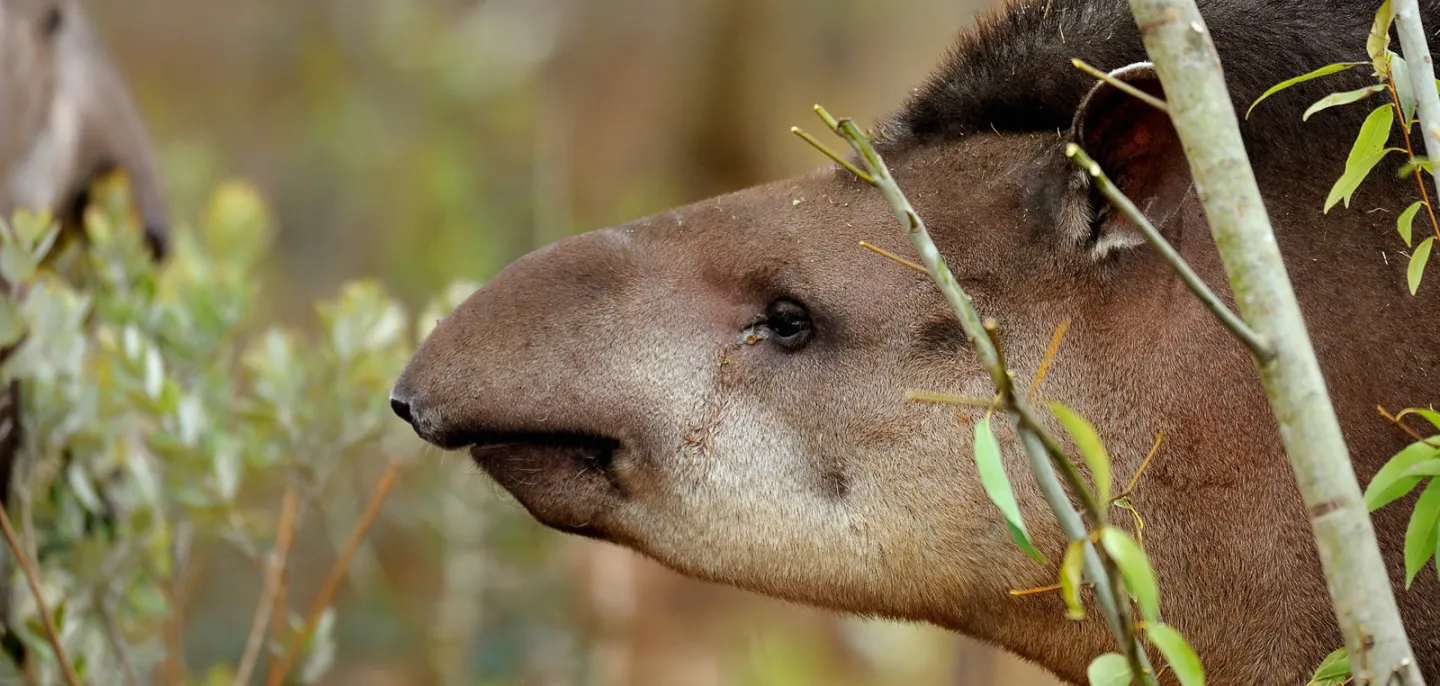
Mammal
The tapir
Tapirus terrestris
The South American tapir, Tapirus terrestris, is a vegetarian mammal from the Tapiridae family which lives in the South American rainforest.
Distinctive features
The tapir has a short prehensile trunk which helps it to grab leaves and fruit to feed on. It reminds you of an elephant’s trunk, but the tapir is not related to it. It is the "cousin" of the horse and the rhinoceros.
Anecdote
This animal is threatened by deforestation, competition with cattle and being hunted for its meat. In captivity, it benefits from a European breeding programme (EEP) in which the zoo is involved.




